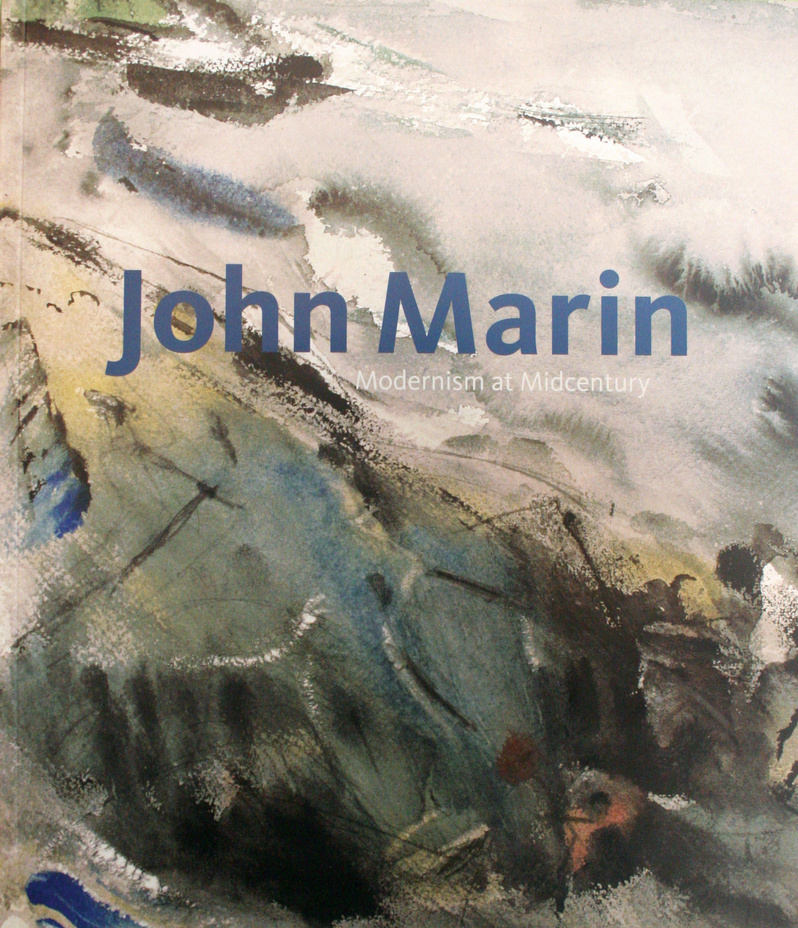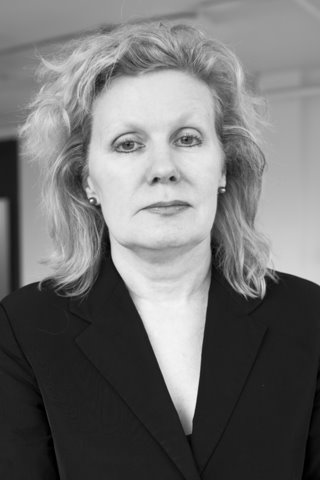Lucky for Debra Bricker Balken, John Marin was a prolific writer. He wrote often from Maine to New York, communicating his thoughts and ideas to his art dealer, Alfred Stieglitz.
Marin, an American painter, left behind a treasure trove of material, which made it possible for Balken to write a comprehensive text for the catalog that accompanies the current Marin exhibition at the Portland Museum of Art, “John Marin: Modernism at Midcentury.”
The exhibition, on view through early fall at the museum, focuses on the last 20 years of Marin’s life, which he spent mostly at his home at Cape Split on the Down East coast of Maine.
Working in watercolors and in oils, Marin walked both sides of the realist-abstract fence.
When he died in 1953, he was considered one of the most important artists in the country, and was viewed as a source of inspiration for the abstract-expressionist movement.
Published by Yale University Press, Balken’s book details Marin’s time at Cape Split and the evolution of his work after he settled there. This exhibition marks the first time a curator has focused exclusively on Marin’s late-career years.
We recently spoke with Balken by phone while she vacationed at Mount Desert. She lives in the Boston area.
Q: Let’s start by talking about your interest in John Marin. What made you want to tackle this exhibition?
A: I had a dual interest, actually. I have worked on exhibitions of a number of artists associated with the circle of Alfred Stieglitz, of which Marin was a part. I have worked on a couple of Arthur Dove exhibitions and (Georgia) O’Keeffe, and I worked on a theme show eight or so years ago that looked at the connections between the Stieglitz circle and Duchamp circles in the teens. I became interested in Marin then.
I am also winding down a biography of midcentury critic Harry Rosenberg. While he never wrote about Marin specifically, I have become interested in the Stieglitz circle and what became of their careers.
Q: What interested you in this late period of Marin’s life?
A: I was interested in the very rich archival materials that surround Marin’s purchase of his house on Cape Split and the letters that he wrote to Stieglitz about the site and the geography of the location. And particular, his response to the sea. He wrote early on, “The sea is so damn insistent here.” So there are very rich archival materials. And then I am always interested in the way in which various critics and writers respond to artists’ work. So many writers have responded to Marin throughout his career.
Q: I’d like to ask about the focus of the exhibition, which is the final 20 years of Marin’s life. Most exhibitions about Marin cover the early years and the mid-career period. Few look at this late-career output.
A: This is the first, actually. As I began to think about this last phase, from 1933 to 1953 and the time he takes up residence at Cape Split, just looking at the calligraphic quality of his work and the parallels of movement with abstract-expressionism, I began to feel this was the most original and adventuresome period of his work. Throughout the decades of the teens and ’20s, which is the period that most people know, there is lingering vestiges of cubism, which is a foreign style that he worked through. But after 1933, we can see him completely resolving his initial debt to cubism and moving on. I thought it would be interesting to focus on those years.
Q: Why are you so passionate about John Marin? What about his character interests you so much, apart from his work as an artist?
A: He was a very eccentric character, and it is part of his eccentricity that I focus on. Marin had a folksy manner. It is very apparent in his writing and prose style. But at the same time, he very deeply engaged in intellectual issues that surrounded painting of his time.
He referred to people who lived in Addison as “a dear bunch of folk.” He absolutely adored the people who lived in Addison. Some of them actually became subjects of his drawings and paintings. He would spend evenings with them. But also another figure who lured him to Cape Split was American journalist Herberg Seligmann, who collated Marin’s letters. He encouraged Marin to buy a house there.
Marin had such a democratic outlook. He did not distinguish between Seligmann and the local people. He treated them all equally.
Q: Do you feel you made discoveries about Marin that other scholars have not?
A: There is certainly a lot of work in this exhibition and catalog that has not been integrated in other exhibitions about Marin, where the late phase has not been highlighted at all.
Q: How daunting was it to take on a subject like Marin, who is so widely known and whose work has been so thoroughly examined before now? During the course of your research, did you ever feel a sense of, “Maybe I should have chosen someone else”?
A: I wasn’t daunted at all, really. I was exhilarated by the research, writing the essay and composing the checklist. It was truly exhilarating.
I traveled for five years for the project on and off. I looked at a lot of material before I pared it down to the 67 images that are in this show.
Staff Writer Bob Keyes can be contacted at 791-6457 or at:
bkeyes@pressherald.com
Follow him on Twitter at:
twitter.com/pphbkeyes
Send questions/comments to the editors.




